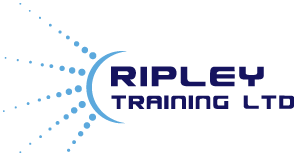Technological change has transformed consumer’s lives and the way we do business. In the past decade alone, there has been the most rapid change since the industrial revolution of the 18th century. And if you work in marketing, you need to ensure that you look into the future and anticipate change in order to keep your brand relevant.
According to leading digital business strategist, Brian Solis, we’re now in the age of “Digital Darwinism”; which he basically describes as the “evolution of technology, business models and society”, which makes the customer experience more intangible. So what does this actually mean?
Digital Transformation
The days when a company could establish its brand, sit back and wait for the customers to come knocking on the door are long gone. Your brand is no longer defined by what it says but also what it does; the World Wide Web has become your online shop window and your business portfolio, accessible to everyone, globally, twenty four hours a day, seven days a week.
In this rapidly changing technological market, it is important for companies to recognise the importance of adapting their brand to meet the requirements of their customers and stay relevant. The goalposts are constantly shifting; nothing remains the same for too long. This means that brands must capitialise on the full digital toolkit of website design, social media, content marketing, SEO and so on; to portray their businesses in the best way possible and effectively cater to their customers.
More traditional brands such as B2B organisations and those involved in manufacturing or engineering, for example, may question the extent to which their company brand should have a digital presence. There could be some confusion over the benefits of this, or perhaps some reluctance to change. In order to make a seamless transition into the digital era, we recommend you consider the following:
1) Know your customers (and your competitors!)
Take time to routinely research your market. This can happen quarterly or monthly if necessary. Review, update and refresh your market knowledge to stay ahead of your competition and better anticipate customer needs. Never ‘rest on your laurels’ as the old adage goes. Your target audience may have grown and evolved; so don’t make mis-informed decisions – customer needs are ever-changing. Use the web to research customers. Sites like LinkedIn offer a massive opportunity to research target customers by name, location, job title, industry and so on. You can also speak directly to your customers via Twitter for a more personable approach with your brand.
2) Plan ahead
As we’ve emphasised above; it’s important to take precautions to stay one step ahead. Complacency runs the risk of your brand being ignored for something more relevant. Create actionable marketing plans with schedules, timings and key tasks. Schedule social media content and plan content for your blog every month in advance. All of these are great ways to boost your content marketing activity and drive visitors to your website whilst also entertaining/educating your audience at the same time, to highlight your brand’s credibility.
Websites for more ‘traditional’ companies don’t just have to be functional. Stand out from the crowd with a magnificent eye-catching design that’s visually pleasing as well as functional! This could mean the difference between a new customer and a missed opportunity.
3) Be innovative
Companies that have been around a while are sitting on a goldmine of opportunity: the opportunity to rediscover what your brand is all about, its heritage and core values. This doesn’t involve steering away from what made you successful in the first place, but instead regaining the spotlight and becoming front page news by doing something different and being at the cutting edge. By rediscovering your brand story, you have something interesting to tell and it’s a great way to not only engage customers and prospects; but your employees too.
4) Don’t be afraid to take risks
Risk aversion is certainly important in business. But how do you know if a decision was ever the right one if you never make it? The answer is, you won’t! What made you relevant before may no longer resonate with your target audiences, who today, are more tech savvy than ever.
Keep an open mind and consider all options with a fresh perspective. Today’s digital environment is rapidly expanding and exciting. Social media offers a host of possibilities for engagement and increased brand awareness.
Making the digital transition
Change can seem daunting or even unnecessary. But we’re not suggesting change for the sake of it. Use digital technologies that you have at your disposal and make improvements to all areas – they can be small or huge, it’s up to you. But consider your website, social media and the content you produce all as key opportunity to attract and win new business. After all, losing relevance is dangerous in a world where customers constantly alter their views and opinions through a continuous flow of communication.
The brand benefits of transitioning to the digital world are vast; from increasing customer conversions and loyalty; through to creating a more engaged and empowered workforce, and increasing your overall competitive advantage.
Experience, insight and instinct should help to provide you with the courage you require to make the right decision, and if you’re considering a corporate change project and need a step in the right direction, consider Leading Change – a leadership development course from Ripley Training, designed to explore the impact of change and the approaches that can be taken to successfully manage its impact. Our Sales and Marketing courses are also a great way to learn key skills in sales and marketing, to help you develop and learn about new technologies in marketing.
To find out more, why not give us a call on 01423 861 122? Or fill in our short contact form – we’d love to help you!

